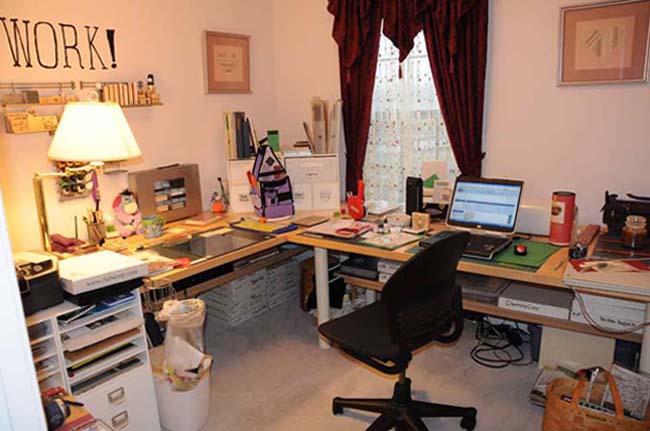Finally, Quick Masks make sense to me! Remember,I'm using CS3 and don't have any other versions of Photoshop or Elements I can test my directions on.... YMMV.
STEP ONE: Very, very important;, Double click on the Quick Mask button at the bottom of the tools palette and bring up the Quick Mask Options pop-up window. The Quick Mask button looks like a gray circle inside a white rectangle. Make sure that your radio button is set for "Color Indicates Selected Areas" which is not the default. Click OK.
STEP TWO: Select the layer you desire and hit the "Q" key to enter Quick Mask, or click on the Quick Mask icon at the bottom of the tools palette. Your color boxes at the bottom of the tools palette should become black and white, with black on top and active to start. That's exactly what you want.
STEP THREE: Select a brush, or a marquee tool or whatever selection tool you desire. Set the parameters for the tool, like brush size and hardness.
STEP FOUR: Paint or otherwise use that tool on your selected layer. You will see a pinkish-reddish 'ink' used wherever you used the tool.
STEP FOUR AND A HALF: If you colored outside the lines, hit the "X" key to switch to painting in white (Make your tool smaller and/or zoom in if you have to) and paint to 'erase' your oopsies. If you undo, you take out everything and might find yourself no longer in Quick Mask mode. Do not use the history palette. It doesn't work inside Quick Mask It only takes you out of Quick Mask. Instead, press 'X' to go back and forth from painting to erasing. As many times as you need it, you can hit it. If you can't remember 'X' there's a 'switch 'em' double ended arrow at the top right of the color selection box at the bottom of the tools palette. That is always visible.
STEP FIVE: When your selection is where you want it, hit 'Q' and exit the Quick Mask. You will have marching ants around all the places where you had pink. If you painted polka dots, you'll have ants around each polka dot. I'd love it if someone who can paint would tell me what the marching ants do around the edge of an area painted with a soft brush to create a feathered edge using their brush. I think they split the difference, but when I try it (and I paint badly) the ants are at the edge of what I've painted.
STEP FIVE AND A HALF: If your selection isn't quite what you wanted, hit 'Q' again and go back to Quick Mask. Keep painting. Or unpainting, whichever you need to do. (There are ways to adjust your selection that aren't painting. I'm not going to go into that now. Just know that you can use Quick Mask with any tool you would use to make a selection and a few that you wouldn't think would work. A paintbrush? Yep, it works and it works really well. So does the lasso tool.) I can start with the Quick Selection tool, refine my edges by painting, switch colors and keep painting, then move to the lasso tool and still edit the same mask!
STEP SIX: When your selection is done and you are happy with your marching ants, you can opt to make adjustments to just that area; you can move, delete or copy it, you can do whatever you want to the area you selected. Quick Mask is just a way of making a selection.
Special Nifty Tricks. If you paint with gray, you select things you can see through. Like a motorcycle windshield. So, using the color picker, you can switch to gray (which shows on your screen as a paler pink) and grab the windshield, go to black (which will show on your screen as pink) and get the handlebar that you can see through the windshield. You can even put the two selections together in one mask. It will have areas of darker and paler pink. As long as you stay in Quick Mask mode, changing the color you paint with won't break anything. Black selects, white erases, and gray selects stuff you can see through. When you move the selection and put the transparent area above a different layer, you will be able to see the layer below through what you have selected. The paler the gray, the more transparent it will be. Ohhh, this is kewl!
If you use a soft brush, instead of a hard one, you can get feathered edges. You can also get streaks in your selection, so be very careful. You can also feather the edges after your selection has been made. I'm not so good with brushes, so I feather the edges after I've made my selection by clicking on the marquee tool and setting the feather option up in the toolbar.
If you are working on a red or pink image and can't see the pink as you paint, you can change the color to be blue or green, or whatever you want that you can see on that red image. That's in the same Quick Mask Options pop-up you used in step one.
If I've started by making a selection and I've already got marching ants, when I go into the Quick Mask mode, whatever I have selected turns pink and the marching ants go away. I can start painting and add to or erase from the selection, I can use a different selection tool and refine my selection; I can move forward in Quick Mask from there. When I exit Quick Mask, my marching ants will return around my refined, tweaked, and fine-tuned selection.
Why would you want to use a keyboard shortcut instead of moving your mouse pointer to make a selection? Because if you use the keyboard shortcut, you can keep your mouse pointer right where you need to start working next and you don't lose your spot.
HTH!!!
Thursday, May 21, 2009
Subscribe to:
Post Comments (Atom)





No comments:
Post a Comment